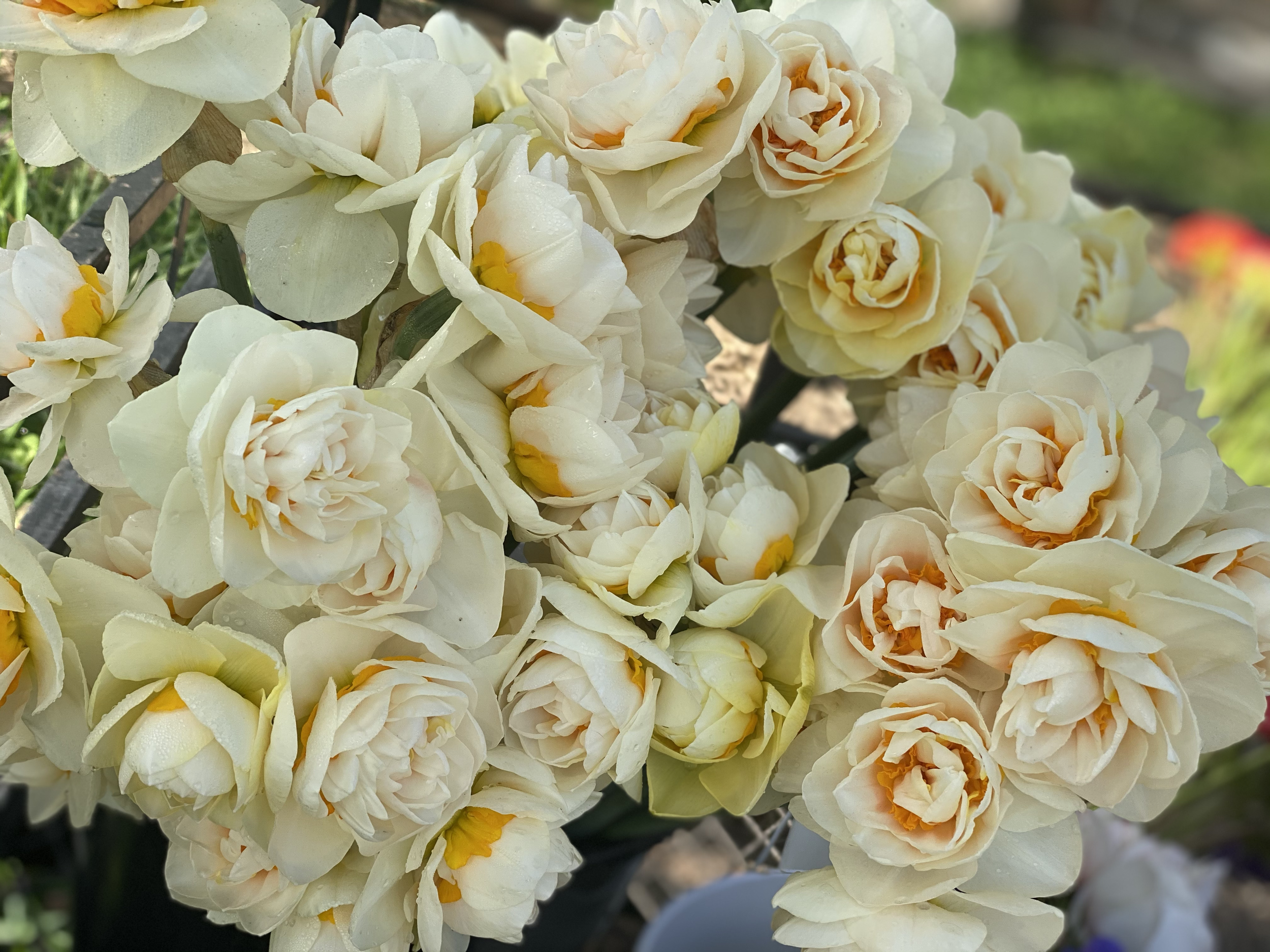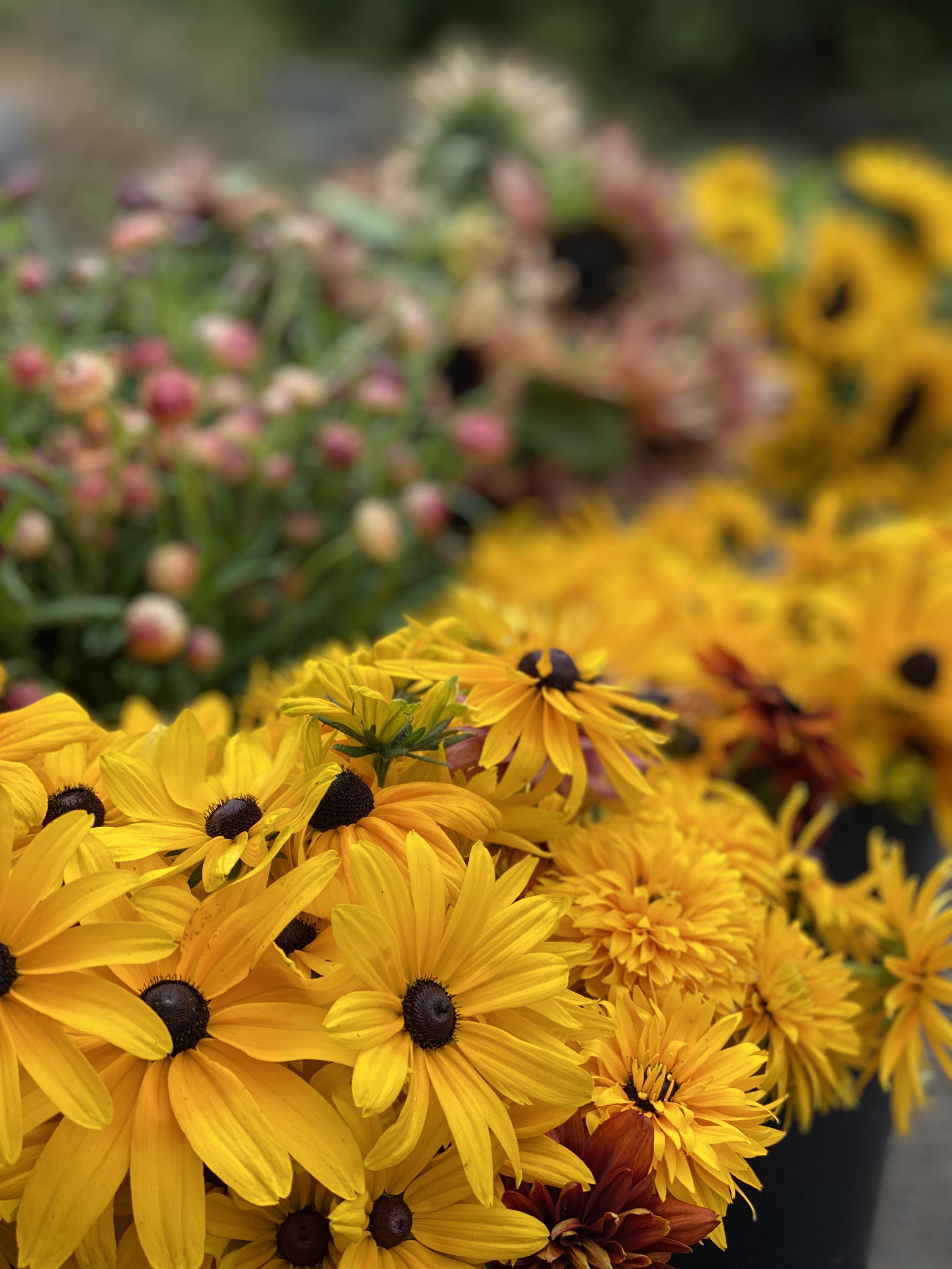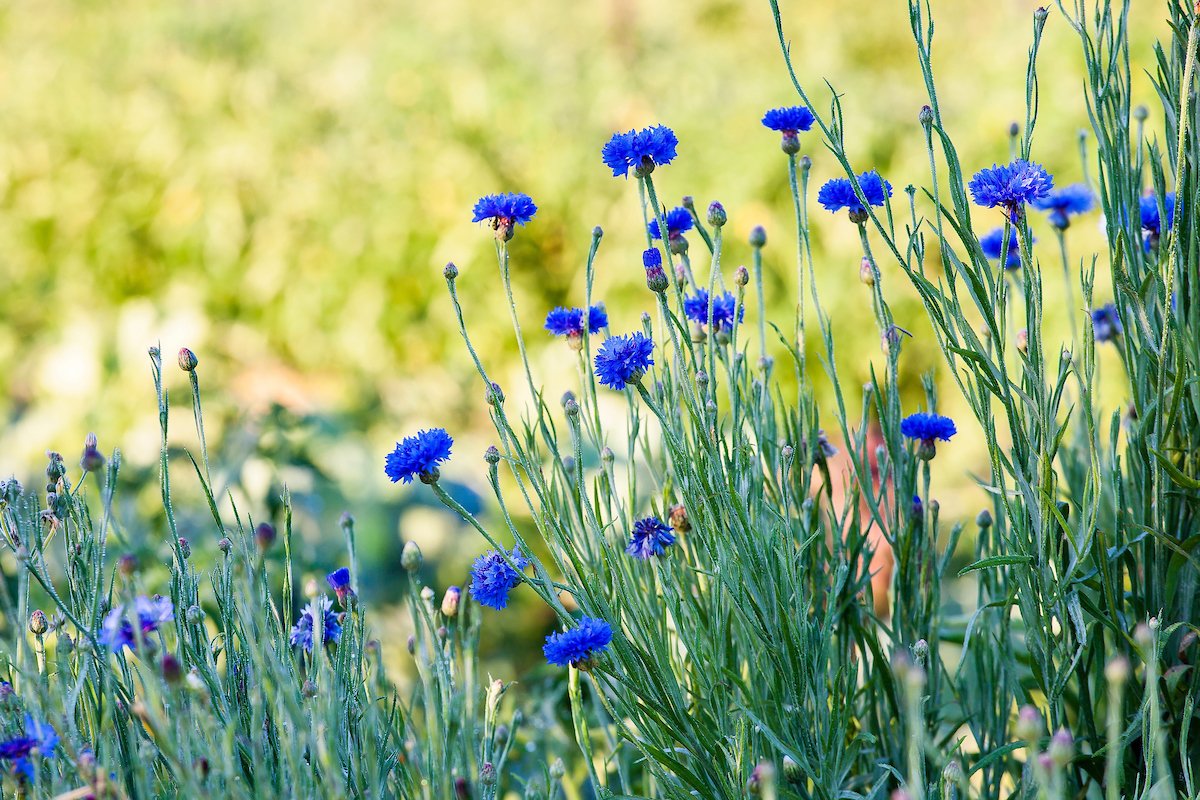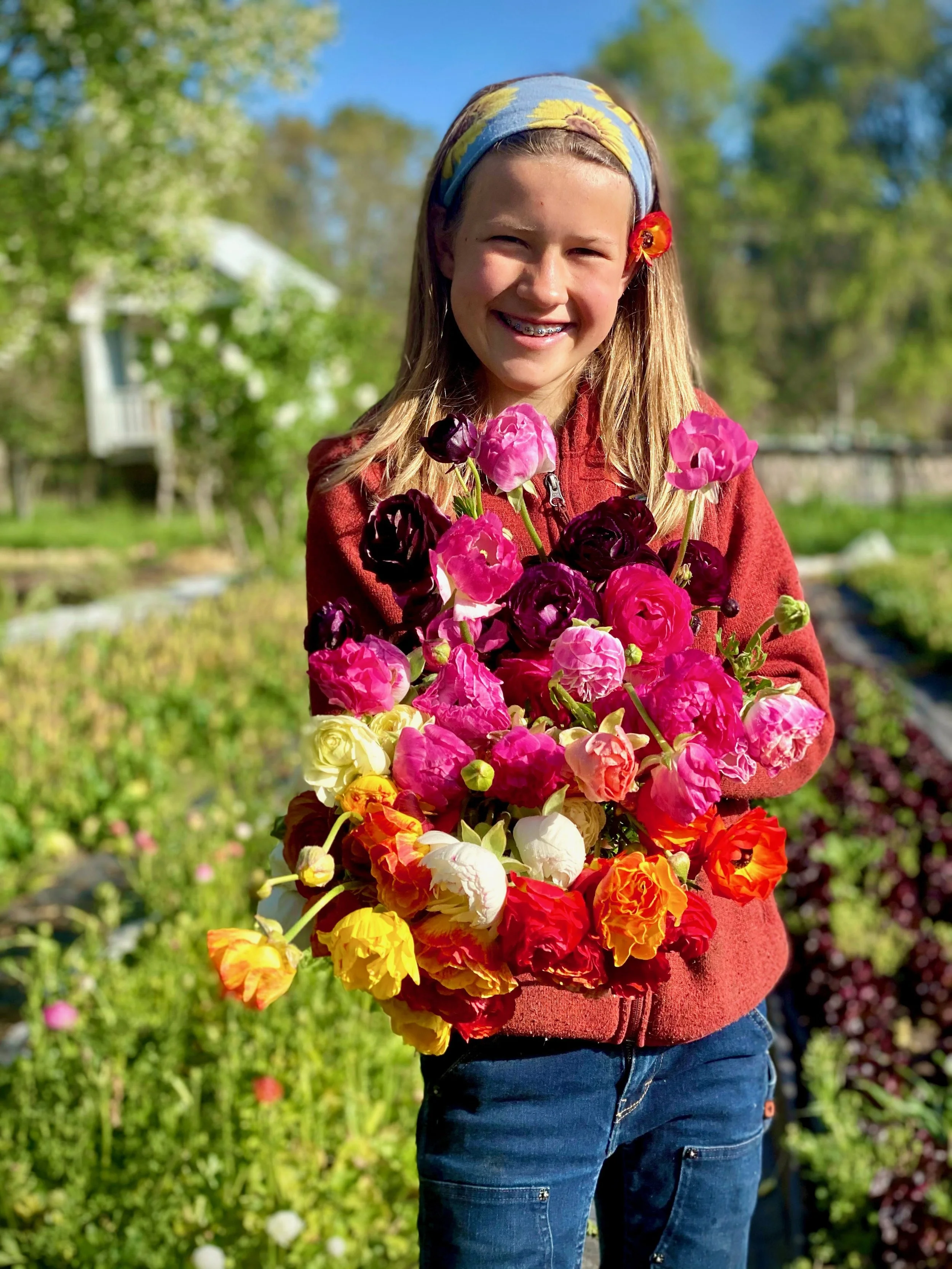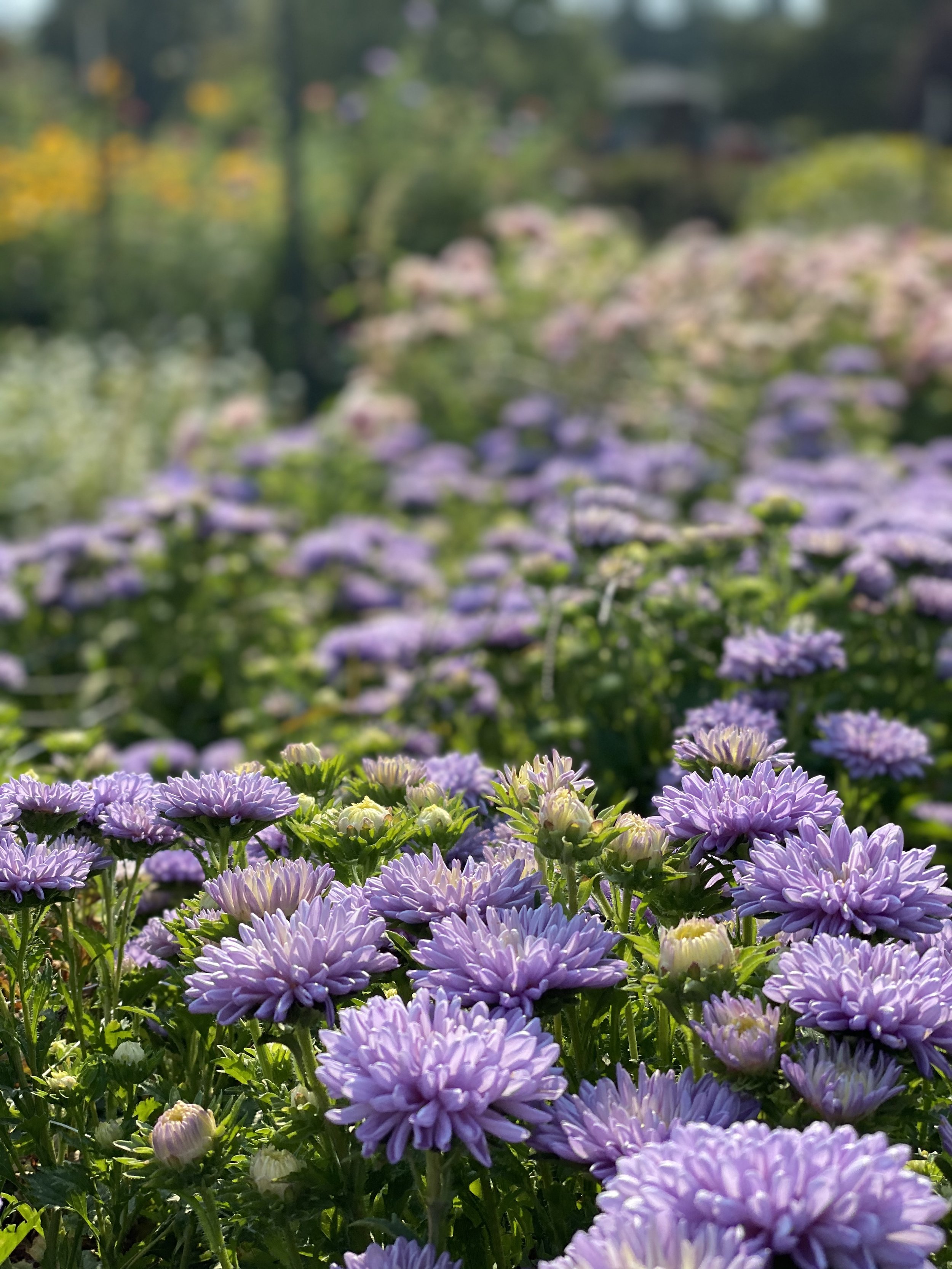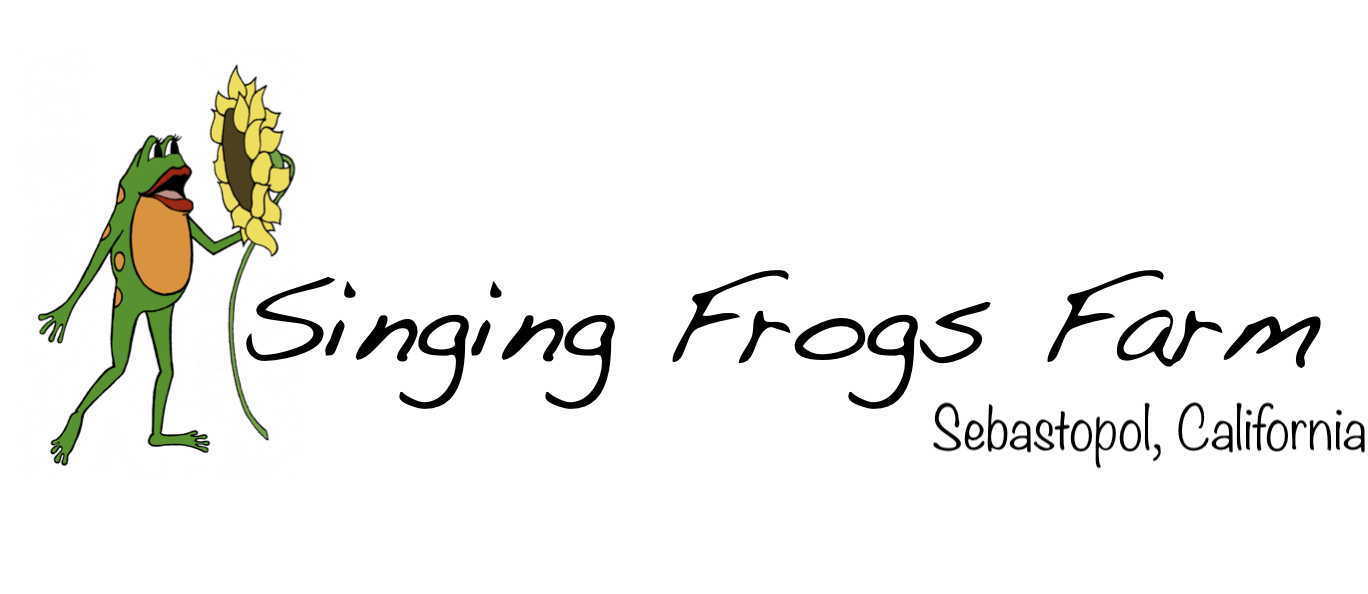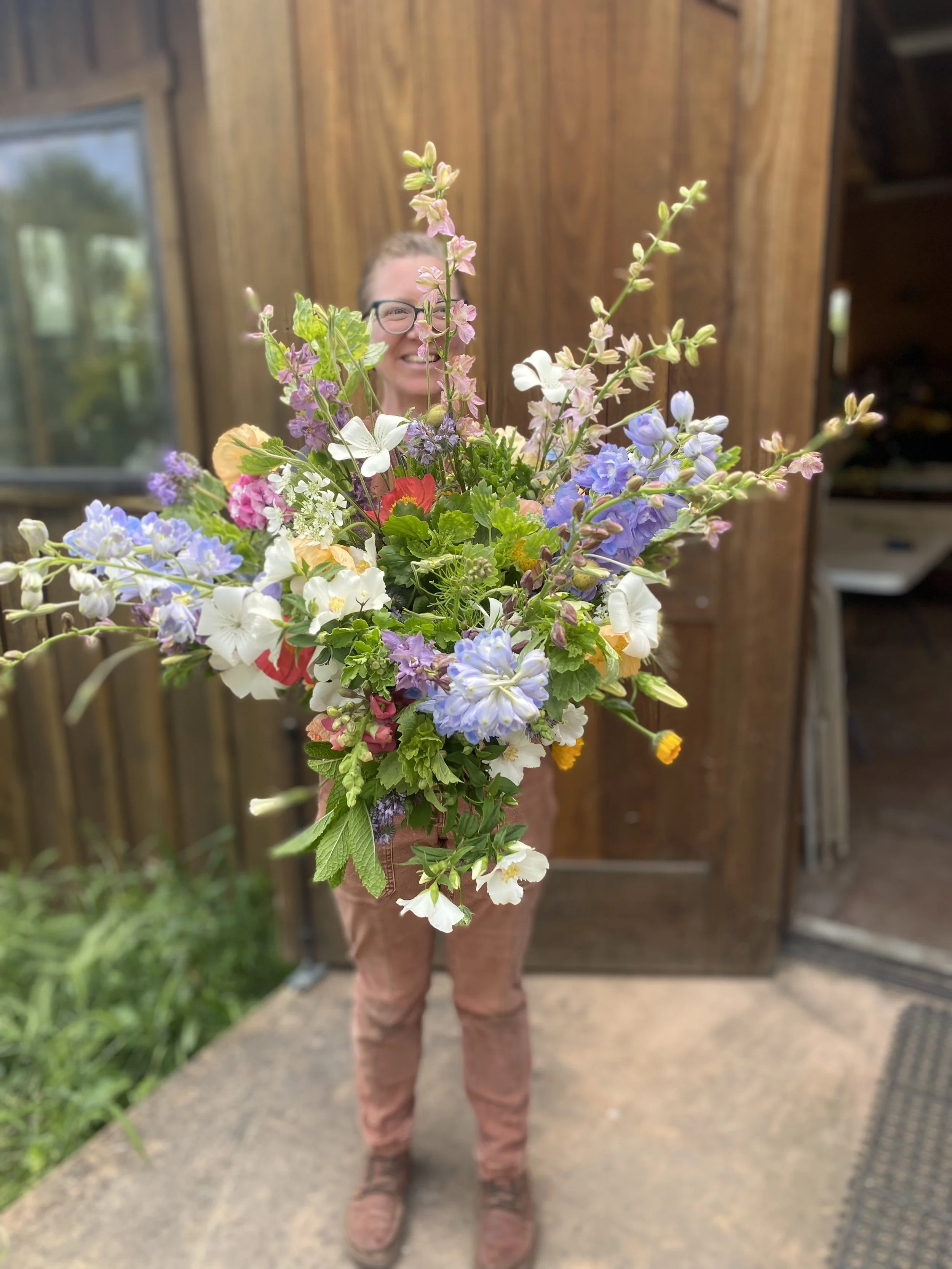Flowers from Singing Frogs Farm
Join our Flower CSA. 🌸 Find our Flowers at the Farmers’ Markets and at Bill’s Farmbasket. 🌸 Get flowers by special request.
A Year in Blooms from Singing Frogs Farm
-

February & March
We start the year with Anemone, Narcissus and Ranunculus, Icelandic Poppies, and Liliac.
-

April & May
Next come the Larkspur and Baby’s Breath (pictured), Snapdragons, Agrostemma, Sweet Williams, and Sweet Peas.
-

June
By June wer’re into late spring swing with Cosmos, Snapdragons, Bells of Ireland, Sweet Peas and the early summer flowers.
-

July & August
Mid-Summer the flower beds are at full production with Sunflowers, Zinnia, Celosia, Feverfew, Statice, Strawflowers, Rudebecia and Dahlia.
-

September
September our Dahlias are in full swing and the Rudebeckia, Sunflowers, Zinnia, Asters flourish plus so many more summer flowers until first frost.
-

October
By October we have our first frosts, we have some protected Dahlias, Stock, Ornamental Cabbage, Statice, Grasses, Calendulas and Rudebeckia.
By buying local, your purchasing power goes directly into the Sonoma County agriculture economy. Your dollars go on to power farming practices that actually contribute to positive ecological impacts: building soil, sequestering carbon, managing waterways, creating climate resilience.
Our flowers are grown in the same way, and contribute additional ecological benefits. Most vegetable farms are out of balance in that few crops are left to flower, and although Singing Frogs is already a stellar pollinator-friendly farm with our flowering hedgerows, by growing rows of flowers, we provide even more support to pollinators and other beneficial insects providing food and habitat corridors throughout the farm.
The ecological benefits continue…
For example, Ammi, one of the umbel-shaped flowers you’ll see in the bouquets, not only attracts a large variety of beneficial predatory insects, but the oils it puts off even wards away pests such as cucumber beetles!
Below ground, flower roots have different structures, and provide different food than vegetables. As such, we mix our flower beds throughout our fields to provide an even greater diversity of crops to keep our soil, and soil biology, robust.
Join us and let’s grow the Slow Flower Movement together!
